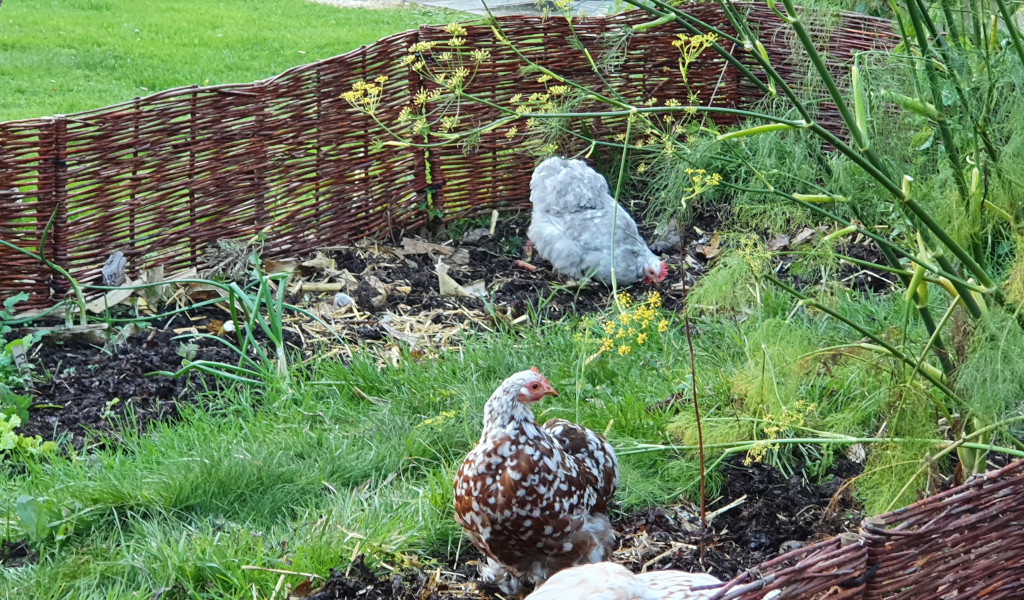By covering the soil of your vegetable garden all winter with live plants (e.g. chervil, corn salad, winter purslane or green manure), you are exploiting and protecting the soil. You can also cover the soil in autumn with dead plant materials such as:
- Leaves (all types are welcome)
- (Manure with) straw
- Harvest residues (e.g. leaves of pumpkin plants)
- Hay (note: these often contain unwanted seeds)
- Herbs (especially nettle without seeds, comfrey)
- Fresh grass clippings (watch out for seeds of annual weeds such as wall and street grass)
- Fresh green trimmings (whether or not shredded)
- Coarse wood chips should not be used on your vegetable garden beds, but on the vegetable garden paths and between trees and shrubs. These wood chips digest very slowly. Use manure in moderation and only for demanding crops such as leeks and cabbages.

Red Clover as Green Manure.

Bark and wood chips for vegetable garden path.
How thick do you spread the covering layer or mulch layer?
Fine material (such as grass clippings) can be applied up to 5 cm thick. Coarse aerated material (such as leaves) you lay up to 10 cm thick. For better digestion and nutrition, you can also mix different materials.
From late May, apply a mulch layer between crops. In late autumn, cover the soil up (even up to 20 cm thick) with hay, crop residues and straw. In early March, remove the mulch layer on your vegetable garden beds and take the material to the compost heap. You will notice that your soil is weed-free and full of useful soil life. You can now sow and plant in abundance.
What are the benefits of mulch?
- You protect the soil from sun, wind, frost and (heavy) rain. So your good soil will not dry out, blow away or wash out.
- A covered soil buffers water better than bare soil. Precipitation seeps through many (worm) holes deep into the soil.
- You suppress the emergence of annual weeds.
- You promote good soil structure.
- The mulch material breaks down and provides nutrition for your plants.
- Under the mulch layer, soil life flourishes. You will find lots of earthworms. They are the engine of a fertile soil.

Earth worm.

Ground beetle.
What beneficial insects will thrive under the mulch layer?
- Ground beetles. They eat snails, worms.
- Compost and earthworms. They convert the mulch layer into food for your plants.
- Woodlice, centipedes, and also benign fungi: they help break down the mulch layer.
- Note: Snails and voles could increase in number under mulch layers. Observe your vegetable garden so that you can make timely adjustments if you discover traces of a vole, for example.
Some tips to keep this under control:
- Mulch thinly, temporarily or locally.
- Mulch with fine grass clippings or hemp fibres. Snails then cannot hide or propel themselves well.
- Disturb the mulch layer occasionally.
Useful tips
In November, cover your vegetable garden with a layer of horse manure and straw and let your chickens scratch around in it all winter. In spring, rake away the coarse remains and the soil is ready.
Sprinkle your fresh lawn clippings directly (and thinly) over the foliage (of potatoes, for example). The sprites will fall to the ground within a few days.



